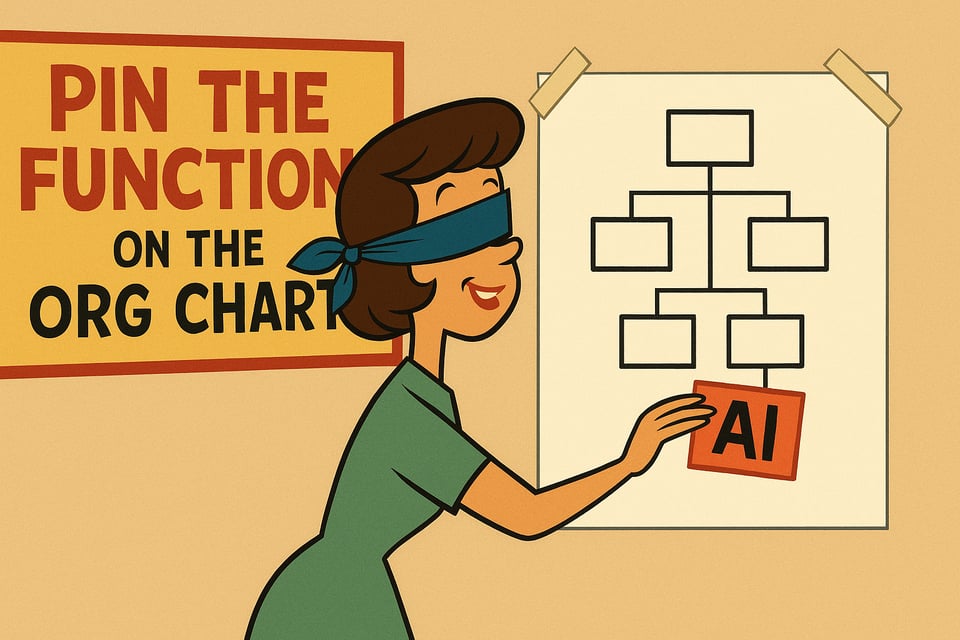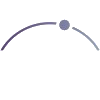Where does the AI go, again?
Org charts hinder adaptability; AI demands a fresh approach to decision-making and organization.
One signal 🔭
One prompt 🧠
One subtraction opportunity ➖
Created by Sam Rogers · Powered by Snap Synapse
🔭 Signal: Org Charts Still Fighting the Last War
The hallowed org chart wasn’t designed for adaptability. It was designed for accountability. The kind of accountability that's required to run large-scale industrial operations. Rows. Columns. Ranks. Review cycles. All of it built to stabilize and standardize, not to evolve. Changes come by way of the dreaded semi-annual "reorg" when everyone is on edge until the next chart is securely in place.
Don't get me wrong, org charts aren't inherently bad. They're just ill-suited to the current pace and patterns of change.
What I’m seeing:
When AI (specifically Agentic AI) enters the picture, most orgs try to play another round their favorite game: Pin It To The Org Chart.
Who should it report to?
Is it a dotted line to this team?
Is IT the HR of AI?
And just like that, we’re back to diagramming reporting relationships while missing the larger point entirely.
The org chart is an artifact from a slower time. It cannot keep up with the decision complexity or velocity required as we rise up the exponential curve of capacity.
Why it matters:
AI can operate across functions, mimic or multiply roles, and quickly expose mismatches between where decisions should really live and where they historically do.
If you’re still using that old chart as your map, you’re missing the new territory.

🧠 Strategic Prompt
Which team is ultimately responsible for something no longer under human control?
Or
What’s the slowest step in your decision chain, and what’s propping it up?
➖ Suggested Subtraction
🪓 Remove one approval from one decision path.
No need to announce anything. Just quietly test, and monitor it carefully.
What happens when one check is skipped?
Does quality measurably degrade?
What (if anything) improves?
In fast-moving environments, the biggest threat usually isn’t bad decisions, it’s decision latency. Once you find a step that truly can’t be removed, can that part be documented by a person but executed by a bot?
🏭 Analogy of the Week: Office Above The Factory

Imagine an old-school industrial facility.
On the ground floor: a factory.
Elevated above the noise: a glassed-in office.
From this office, management can see the whole floor but stay removed from the actual work. Decisions are made in calm and quiet from on high, then sent down the ladder to the laborers doing the laboring.
That’s your org chart.
AI and modern tooling are more like sensors within the machines themselves. They’re embedded. Fast. Sometimes opaque. And they're moving at such a fast clip that they really can’t wait for a decision to descend from above.
To lead well today, we need to wire our decisioning in and around the moving parts.
This requires a fundamental shift in perspective.
Instead of looking down from above, it’s about sensing from the inside out, and making sense from the outside in.
♬ Closing Notes
Org charts stabilize what already exists. But if what exists is already outdated, then they can only amplify drag.
→ A Signals Briefing can help map where your specific org’s current logic is misaligned with what’s emerging. And where a little subtraction could unlock faster adaptation. Briefings are limited and by design. Book yours while space is available.
→ Prefer interactive AI guidance? Meet our new CAIO Copilot built from this same Signals DNA and freely available via ChatGPT.
→ Tune in next week. Subscribe here to get our next issue.
Until next time,
Sam Rogers
Strategic Subtractor, Snap Synapse
